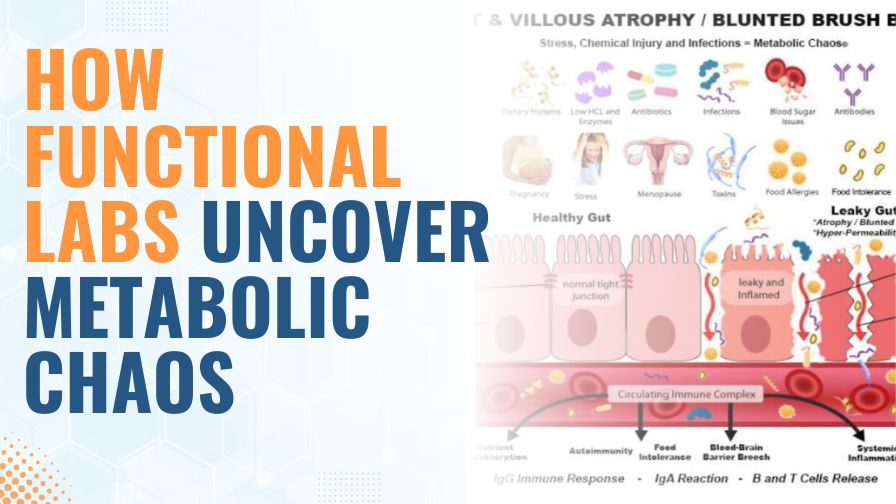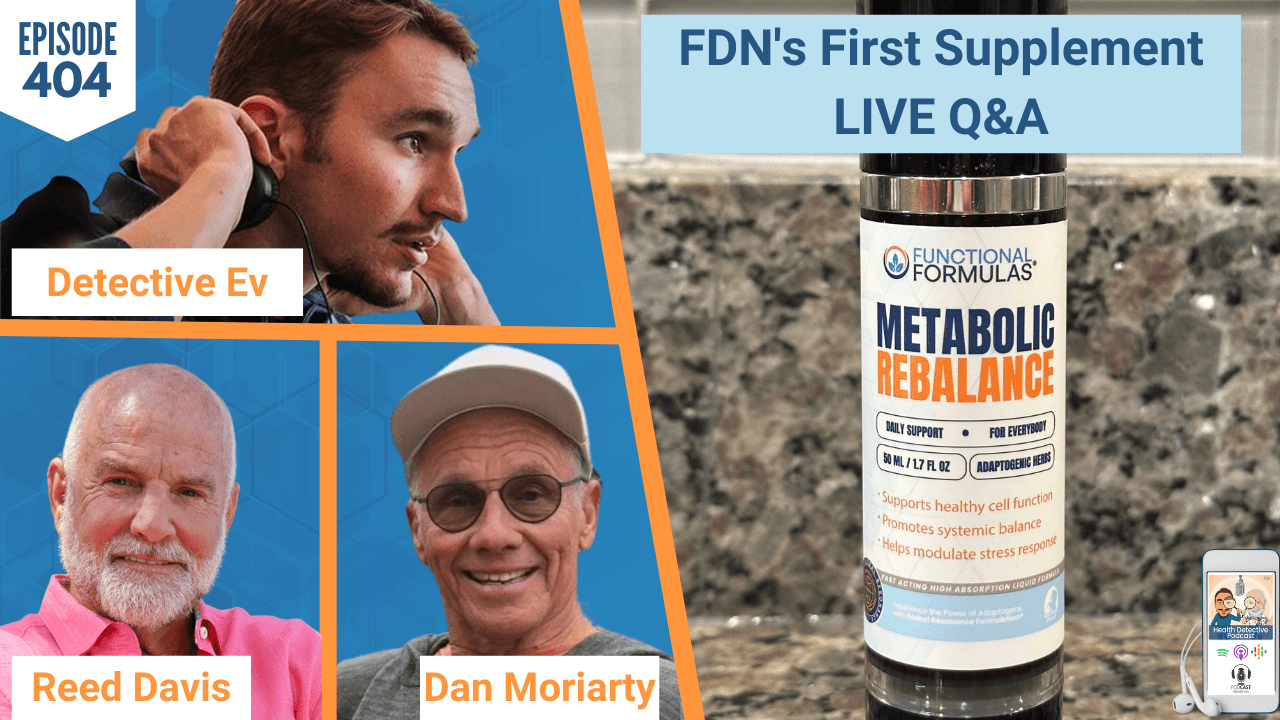FDN’s DRESS Protocol is a trademarked, comprehensive system designed to address every opportunity for lifestyle healing. This guide explains how balancing diet, rest, exercise, stress reduction, and supplementation can restore your body’s “vital reserve bank account” and reduce metabolic chaos.
Introduction to Metabolic Chaos™ and the DRESS Protocol™
Metabolic Chaos describes the cumulative disruption of your body’s internal systems due to lifestyle imbalances. The DRESS protocol was developed to ensure no healing opportunity is overlooked by integrating five key pillars: diet, rest, exercise, stress reduction, and supplementation. Unlike many conventional approaches that focus on one or two aspects (often diet and exercise), the DRESS protocol insists on a holistic balance. It acknowledges that while many practitioners excel at addressing diet or exercise, neglecting proper rest or stress management can leave significant gaps. The aim is to replenish the body’s “vital reserve bank account” so that energy can be allocated toward healing across all systems.

Diet: Discovering Your Perfect Ancestral Diet
Personalized Nutrition Over Fads
No One-Size-Fits-All:
The prevailing notion that one diet (be it keto, paleo, vegan, or raw) can universally improve health is a misconception. FDN’s approach recognizes that each individual’s genetic background determines a unique macronutrient ratio—the precise balance of fat, protein, and carbohydrates—that best supports their health.
Embracing Ancestral Wisdom:
Our ancestors adapted to local resources, and their genetic legacy dictates the nutrient balance that works optimally for each person today. Instead of prescribing popular diets without personalization, FDN’s system evaluates your genetic predispositions and lifestyle needs to determine your perfect ancestral diet.
Whole Foods and Eliminating Processing:
Emphasis is placed on eating whole, unprocessed foods. The protocol advises removing the “big four” dietary components—gluten, alcohol, dairy (or dairy alternatives), and sugar—to reduce inflammation and nutrient depletion. By doing so, you eliminate common sources of metabolic stress while ensuring that your food choices support your unique nutritional requirements.
Eliminating Guesswork:
FDN’s method involves determining your precise macronutrient ratio so that you know exactly what your body needs rather than relying on generalized dietary trends. This individualized approach helps prevent scenarios where a diet may help one person but leave another depleted or even worsen their condition.

Rest: The Unsung Pillar of Healing
Redefining Rest Beyond Sleep
Beyond Just Sleep:
Rest encompasses more than the number of hours spent asleep. It’s about aligning with your natural circadian rhythm, ensuring that you not only sleep at the right time but also integrate periods of downtime throughout your day.
The Importance of Downtime:
Modern society’s emphasis on constant productivity often results in minimal breaks, leaving our nervous system in a perpetual state of alert. Unlike the myth that “you can sleep when you’re dead,” the reality is that insufficient rest disrupts detoxification processes, impairs brain function, and reduces immune efficiency. Regular short breaks—whether through meditation, a short walk outside, or simply a pause to breathe—are crucial for resetting your internal systems.
Circadian Rhythm and Its Effects:
Humans are naturally diurnal. The DRESS protocol highlights that our bodies are wired to be active during the day and to recuperate at night. Disrupting this natural rhythm (for example, staying up until the early hours or being constantly active without downtime) can impair internal detoxification and healing mechanisms, ultimately depleting the “vital reserve bank account.”
Rest in Practice:
Drawing on anthropological insights, FDN reminds us that our Paleolithic ancestors worked only 10–20 hours a week and prioritized significant downtime. This historical perspective reinforces the idea that scheduled rest—even brief, periodic breaks during the day—can recalibrate our nervous system, improve sleep quality, and enhance overall healing.

Exercise: Balancing Activity with Recovery
Exercise as Eustress Versus Distress
Critical Role of Exercise
Regular exercise is essential for maintaining metabolic flexibility and overall health. It acts as a form of “eustress”—a positive stress that strengthens the body’s adaptive capacity.
Avoiding Over-Exercising
However, there is a fine line. When exercise is excessive or mismatched to the body’s current state, it transforms into “distress,” draining the body’s limited energy reserves rather than replenishing them. Over-exercising without adequate recovery or in the presence of other lifestyle imbalances (like insufficient sleep) can lead to muscle loss, joint pain, and general exhaustion.
Listening to Lab Results
FDN’s protocol involves reviewing lab data to understand your body’s “vital reserve bank account.” If lab results indicate that your energy reserves are low, the protocol may recommend scaling back on exercise temporarily. This tailored approach ensures that you’re investing energy (or “money”) into your body’s systems at the right time, rather than inadvertently depleting them through overexertion.
Long-Term Well-Being
Exercise should support overall recovery and vitality. FDN’s strategy is to balance exercise intensity with rest and recovery so that each workout contributes positively to long-term health rather than accelerating wear and tear.

Stress Reduction: A Multi-Dimensional Approach
Understanding and Eliminating Stressors
Stress is dissected into three critical categories, ensuring that all aspects of stress—physical, mental/emotional, and environmental—are identified and managed.
Physical Stressors
- Daily Habits: Prolonged computer use, excessive exposure to blue light (especially from Zoom calls), and repetitive physical motions (common in professions like massage therapy or personal training) contribute significantly to physical stress.
- Lifestyle Choices: High caffeine intake and other stimulants, which are often used to combat fatigue, can inadvertently drain energy reserves and add to metabolic chaos.
Mental and Emotional Stressors
- Internal Pressures: Factors such as job dissatisfaction, relationship challenges, financial worries, and unresolved past traumas can keep the nervous system in a state of constant alert.
- Daily Mental Load: The cumulative effect of these mental and emotional stressors can severely deplete the body’s reserves, making it difficult for healing processes to occur effectively.
Environmental Stressors
- Toxins and Chemicals: Everyday exposures—from chemicals in personal care products and household cleaners (such as bleach or Lysol) to contaminants in cooking utensils (like Teflon or plastic containers)—add a significant toxic burden.
- Modern Exposures: Studies have shown alarming levels of chemical exposure even before birth, with children in utero exposed to hundreds of chemicals. These environmental toxins not only drain the body’s resources but also contribute to chronic inflammation and metabolic imbalance.
FDN’s approach is to perform a comprehensive inventory of these stressors, eliminating or mitigating them where possible, so that the “pennies” being spent from your vital reserve account are minimized, allowing more energy to be allocated toward healing.

Supplementation: The Four S’s Strategy
Targeted Nutritional Support to Rebuild Vital Reserve
Substitution
- Modern Soil Depletion: Modern agricultural practices have significantly depleted the nutrients in our food—even organic produce often lacks sufficient vitamins and minerals compared to historical levels.
- Food Quality Concerns: FDN’s substitution strategy acknowledges this nutrient gap by recommending targeted supplementation to replace what is missing from our food supply, ensuring that the body receives the full spectrum of essential nutrients.
Stimulation
- Lab-Driven Adjustments: Based on individual lab results, stimulation involves boosting specific underperforming systems. This tailored supplementation helps to “kick-start” areas that are lagging in function, ensuring that they have enough energy to contribute to overall wellness.
Support
- Balanced Nutritional Aid: Beyond stimulation, support focuses on systems that may be overworked or under-resourced. By providing balanced nutritional support, FDN helps to stabilize these systems, allowing the body to restore harmony and functionality.
Self-Treatment for Pathogens
- Pathogen Management: While pathogens are often viewed as the root problem, FDN sees them as symptomatic of underlying imbalances. The self-treatment approach involves using targeted herbal remedies to manage pathogen loads while simultaneously strengthening the gut and immune systems.
- Preventing Further Damage: This dual approach ensures that while pathogens are being managed, the body’s detoxification processes are supported, and the overall nutrient reserves are not further compromised.
The key takeaway is that supplementation, while popular, should be used in tandem with diet, rest, exercise, and stress reduction. No single pillar can resolve the deeper issues if other imbalances remain unaddressed.

Implementation Strategy: From Intake to Long-Term Management
Getting Started with the DRESS Protocol
Initial Assessment
- Metabolic Chaos Scorecard: The process begins with an intake that includes a metabolic chaos scorecard—a tool designed to measure how far a client’s lifestyle has deviated from optimal balance over time.
- Lifestyle & Medical History: Clients also complete a comprehensive form detailing their diet, rest, exercise habits, stressors, supplementation routines, and past medical history. This dual-assessment allows practitioners to identify specific imbalances across the five pillars.
Clinical Correlation
- Lab Reviews: Once lab results are obtained, they are clinically correlated with the lifestyle data. This helps in determining which areas (or “bank accounts”) need immediate attention and where energy (money) is lacking.
- Customized Recommendations: Based on this correlation, the practitioner creates personalized DRESS recommendations that address specific lifestyle imbalances.
Summary Sheet & Regular Check-Ins
- Actionable Steps: Clients receive a DRESS summary sheet outlining two or three critical focus areas within each pillar.
- Scheduled Follow-Ups: A check-in rhythm is established—typically every other week—to allow clients time to implement changes and then assess the outcomes. For some, a weekly check-in may be preferred, depending on their needs and response to the protocol.
Monitoring Progress and Adjusting Protocols
Continuous Feedback Loop
- Monthly Reassessments
- Every 30 days, clients complete a new metabolic chaos scorecard. This provides a quantifiable measure of progress and highlights areas where adjustments are needed.
Course Corrections
- Adapting to Results:
- If a client shows improvement in some areas but stagnation or decline in others, the practitioner will adjust the protocol—adding new recommendations or scaling back elements like exercise intensity or supplementation dosage.
- Understanding the Healing Curve:
- Healing isn’t linear. For example, during detoxification (such as heavy metal clearance), a client might feel temporarily worse as the body “spends” its reserves on a major healing operation. This temporary setback is seen as a necessary part of the overall journey toward better health.
Trusting the Process
- Body’s Innate Intelligence:
- The DRESS protocol is built on the belief that the body, given the right support, will spend its “money” (vital reserve) on the most critical healing needs.
- Patience and Persistence:
- Clients are encouraged to trust the process, understanding that significant improvements may require a long-term commitment rather than a quick fix.

Managing Client Expectations and Compliance
Aligning Goals with the Natural Healing Process
Realistic Goal Setting
- Short-Term vs. Long-Term: Clients are guided to set achievable goals. While rapid improvements (like dramatic weight loss or quick fixes for chronic conditions) are common desires, the protocol emphasizes incremental progress in areas such as sleep quality, energy levels, and overall wellness.
- Non-Medical Model Approach: FDN’s system departs from the conventional medical model that focuses on treating specific conditions. Instead, it emphasizes holistic balance. This may require a mindset shift for clients used to expecting a “pill for every ill.”
Compliance Challenges
- Lifestyle Commitment: Maintaining balance across five pillars can be challenging. Constant attention is required to avoid overdoing one area (such as excessive exercise) while neglecting others (like rest or stress management).
- Connecting to Life Goals: Practitioners work closely with clients to connect lifestyle improvements with their personal passions—whether it’s spending quality time with family, pursuing creative projects, or simply enjoying better overall health. This connection helps reinforce the importance of sticking with the protocol.
Managing the Healing Timeline
- On the Body’s Schedule: Healing follows its own timeline. Clients may sometimes feel that progress is slow or uneven. Regular reassessment helps manage expectations, reinforcing that healing is a dynamic, sometimes zigzag process.
- Navigating Setbacks: When clients experience setbacks, such as feeling worse during detox phases, practitioners provide additional support and explanation to maintain motivation and adjust the plan as necessary.

Additional Clinical Support and Continuing Education
Enhancing Practitioner and Client Success
Clinical Advising Team
- Expert Consultations: For cases where clients struggle to see desired outcomes, FDN offers access to a clinical advising team. These experts can provide personalized consultations, helping to navigate complex cases or make informed course corrections.
- Peer Support: The availability of clinical advising ensures that practitioners are never alone in managing challenging cases. This support network enhances overall client outcomes and is available via our graduate program the Association of FDN Professionals (AFDNP).
Advanced Education Opportunities
- Foundational and Beyond: While the foundational course provides robust mentorship and training, FDN also offers advanced courses on specialized topics that arise in clinical practice. These courses help practitioners stay current and continually refine their skills.
- Continuing Mentorship: Ongoing education and mentorship are central to the FDN philosophy, ensuring that both practitioners and clients benefit from the latest clinical insights and evolving best practices.
Expanding Clinical Tools
- Broader Lab Panels: In addition to the foundational labs, FDN provides access to an expanded panel of tests that can explore deeper healing opportunities. This flexibility allows for more detailed clinical correlation and targeted interventions when needed.
Conclusion
The DRESS protocol provides a holistic blueprint for reducing metabolic chaos and restoring balance by focusing on five critical pillars: diet, rest, exercise, stress reduction, and supplementation. By combining personalized nutrition, structured rest, balanced exercise, comprehensive stress management, and targeted supplementation, FDN creates a dynamic, adaptive system designed to rebuild the body’s vital reserve bank account. Whether you’re just beginning your healing journey or you’re a practitioner looking to fine-tune your approach, the in-depth strategies outlined in this guide offer practical, actionable insights. With a commitment to continuous monitoring, course correction, and long-term support, the DRESS protocol empowers you to reclaim balance and optimize overall health.
Learn More & Discover Functional Labs








